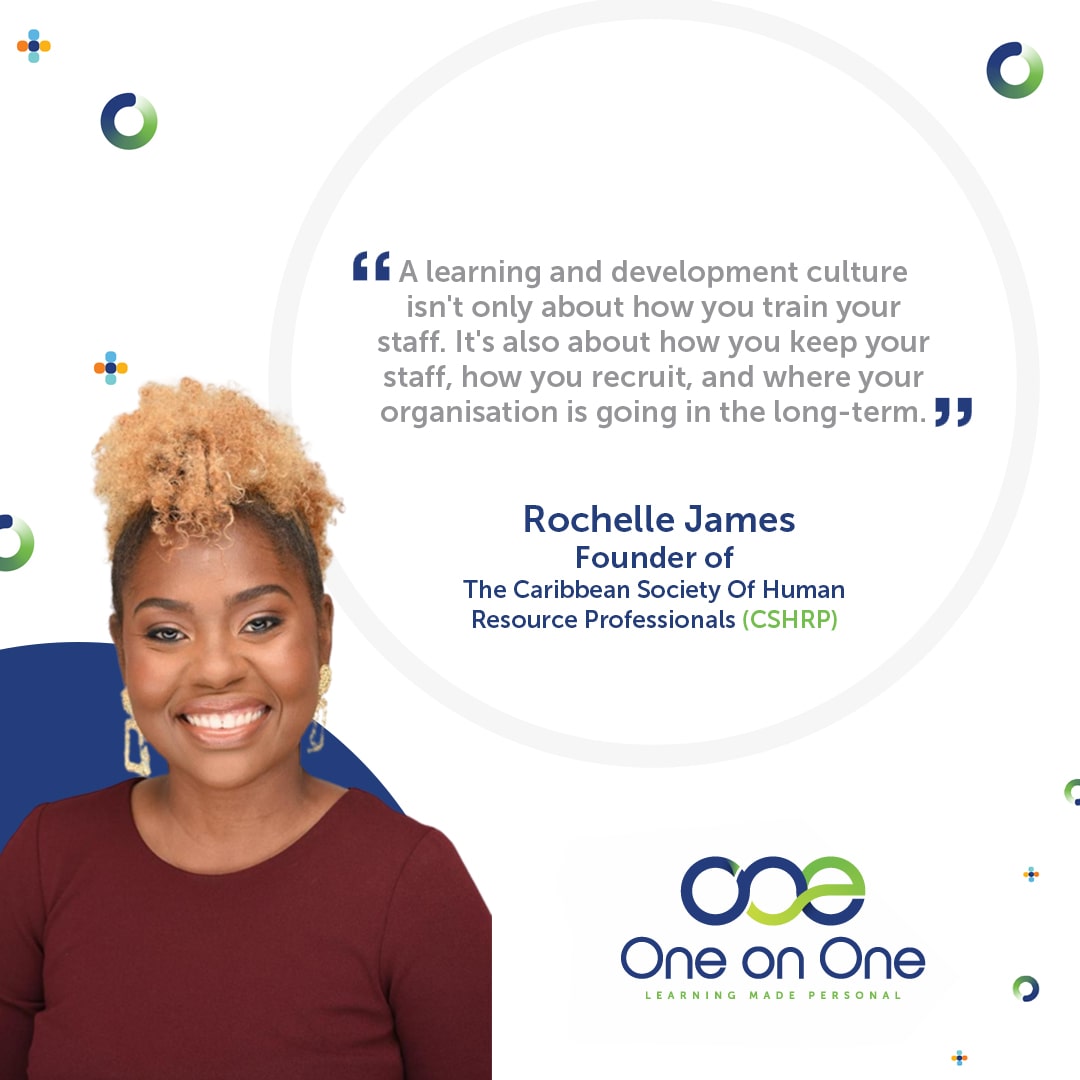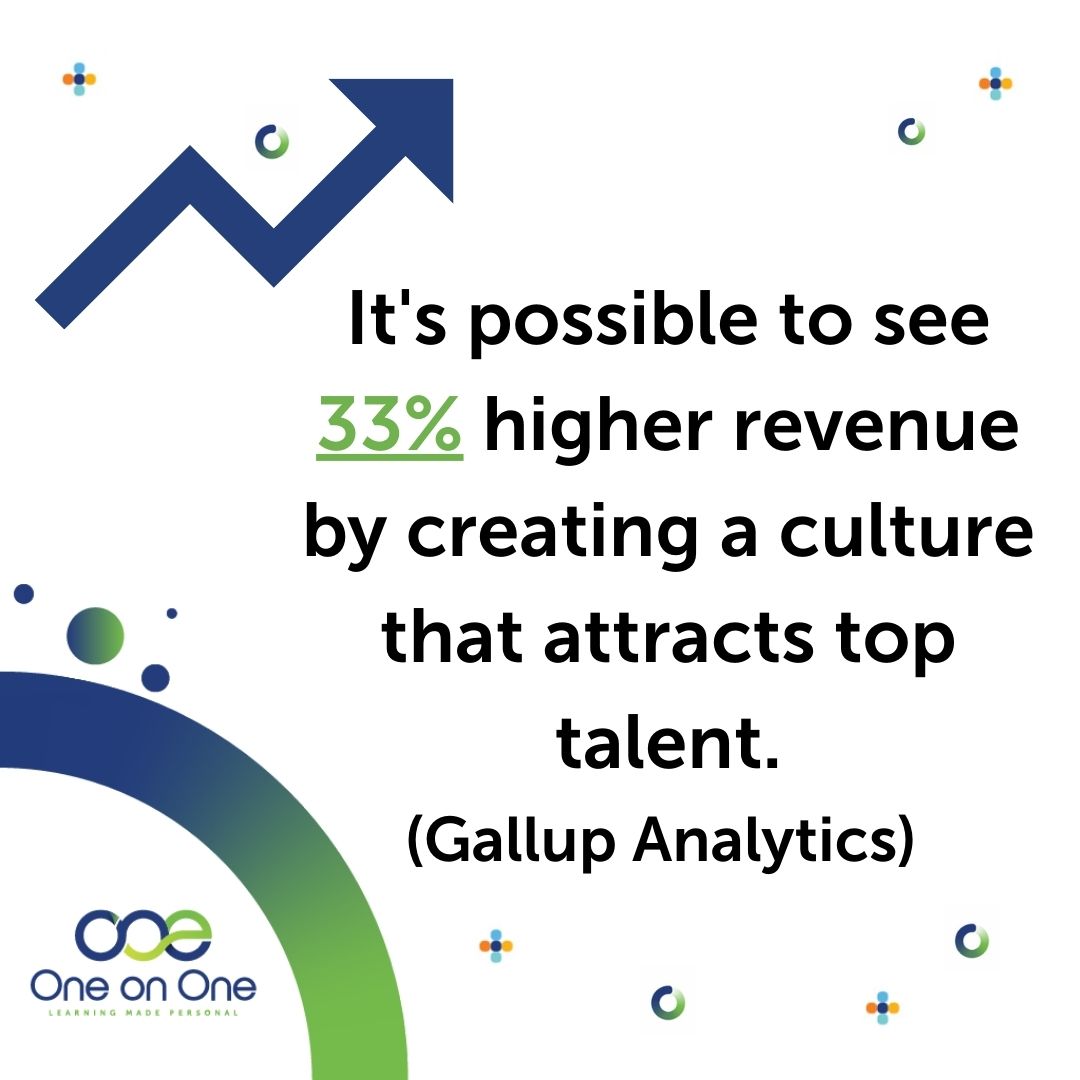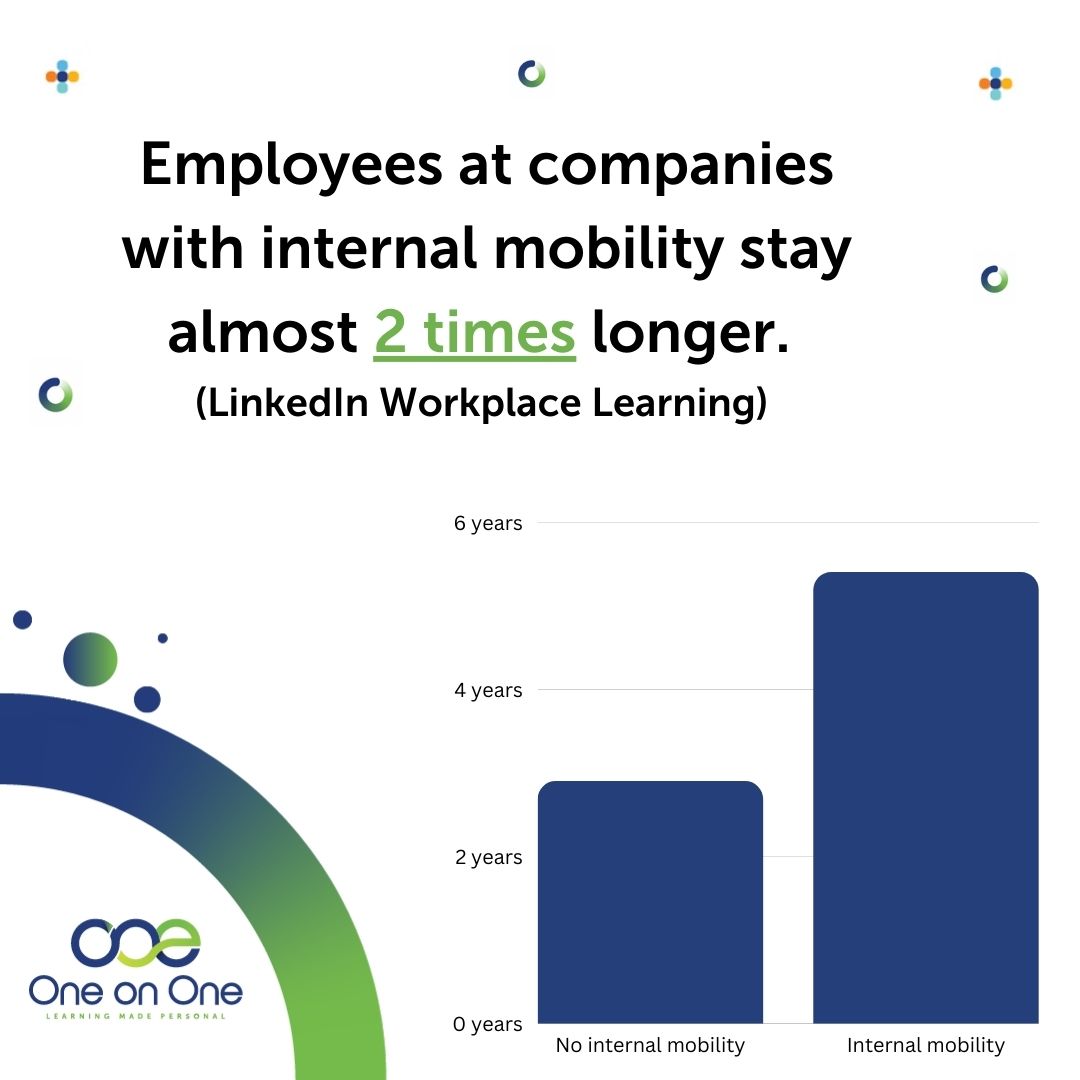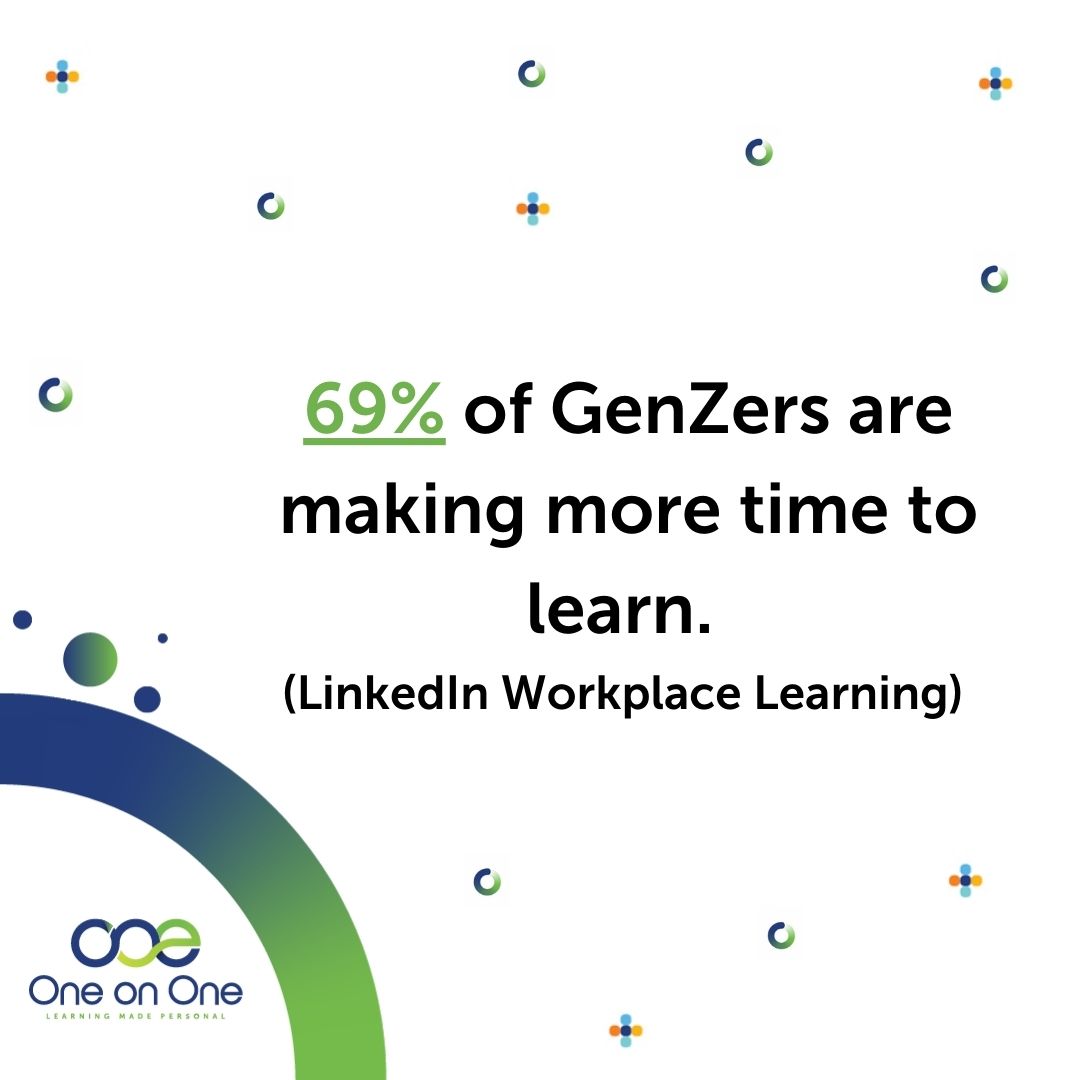How To Improve Workplace Culture Using Corporate Learning And Development
Workplace culture can make or break a company. Seventy percent (70%) of business leaders report that culture is a huge source of competitive advantage. In fact, 66% of C-suite executives believe culture is more important to performance than the organisation’s strategy or operating model. So, it’s safe to say that the future of your company isn’t looking bright if your workplace culture isn’t positive.
Several strategies can be used to create a strong workplace culture, but the strategies that work best are those directly linked to employee happiness and employee satisfaction. Aside from rewards, recognition, and a positive work environment, a healthy corporate learning and development culture makes both outcomes possible. In other words, corporate learning and development impacts workplace culture.
Picture working at a company where people enjoy coming to work, feel adequately challenged, believe they’re valued, and experience upward mobility. That’s the type of company we believe you can create by making a healthy learning and development culture part of your workplace culture.
This article is inspired by our interview with Rochelle James, Founder of the Caribbean Society of Human Resource Professionals. You can listen to the full episode below or watch it on Youtube.
Here’s what we’re covering in this article.
Table of Contents
What’s A Learning And Development Culture?
Why Is A Learning And Development Culture Important For Workplace Culture?
How To Make Learning And Development A Priority In Your Organisation
Gamification And Learning And Development
What Is A Learning And Development Culture?
A learning and development culture stems from your organisation’s strategic focus and how you plan to develop your business in the long-term. It isn’t only about how you train your staff. It’s also about how you keep your staff, how you recruit, and the long-term goals of your organisation.

Lean learning is also part of an effective learning and development culture. Steve Galeveski explains that lean learning ensures employees not only learn the right thing, at the right time, and for the right reasons, but also that they retain what they learn. Humans, regardless of age, forget at least 75% of what they learn after 6 days. That’s why there must be a component of learning and development culture that focuses on tracking how L&D initiatives impact employee performance and, ultimately, company growth.
Why Is A Learning And Development Culture Important For Workplace Culture?
Learning and development impacts workplace culture in three ways.
1. It’s possible to see 33% higher revenue by creating a culture that attracts top talent (Gallup). A workplace culture that focuses on the learning and development of employees provides one way to make attracting top talent possible.

2. Having a workplace culture that supports internal hiring increases employee loyalty. Employees at companies with high internal mobility are likely to stay at these companies almost 2x longer. A strong learning and development culture provides the knowledge and certifications employees need for promotions.

3. An active learning and development culture makes your company more appealing to GenZers (people who are 18 to 24 years old). According to a LinkedIn Learning Report, 69% of GenZers said they were making more time to learn. GenZers are highly concerned about career growth. They’re the future of the workforce ad Baby Boomers age out and Millennials take on more leadership roles in companies.

How To Make Learning And Development A Priority In Your Organisation
Many Caribbean HR leaders share a common fear — cuts to their learning and development budgets because there’s no proof of ROI. Either that or they have absolutely no budgetary support for learning and development initiatives. But Ayanna Thompson, a Learning and Development Specialist working in the telecoms sector, shares that this fear shouldn’t be the focal point.
“I think at times we focus on meeting the deliverables and not necessarily finding out what will have the best outcome. Understandably, there will be time restrictions and budgetary constraints but we can’t always make that the focal point. You have to invest in order to reap the rewards.”
~Ayanna Thompson, a Caribbean-based Learning & Development Specialist
Making learning and development a priority means focusing on the initiatives that will have the best outcomes. This knowledge comes through four tactics described below, tactics that help you learn how to create a learning and development strategy that works. That’s how you’ll get C-Suite buy-in for your learning and development program.
1. Make Learning And Development Part Of The Employee Onboarding Process
The Society of Human Resource Management (SHRM) defines new employee onboarding as “the process of integrating a new employee with a company and its culture, as well as getting a new hire the tools and information needed to become a productive member of a team.” The reality is that new employee onboarding in many companies is often vastly different from what SHRM describes. It’s often filled with a lot of processes and paperwork which leads to new hires feeling like the company isn’t committed to their success.
Learning and development should be a key part of the employee onboarding process. Chandler Bolt, Founder of The Self-Publishing School, explains how learning and development can be integrated into employee onboarding. Here’s what he recommends:
Teach And Reinforce The Company’s Core Values
New hires need to learn how business is done at your company. Chandler recommends recording video playlists about each of the company’s core values and making it mandatory for new hires to watch them. He also recommends asking new hires to printout the core values and place them somewhere prominent in their workspace. The core values will, therefore, remain in focus.
Rochelle shared during her podcast interview that employee onboarding should be an induction process. Part of that process does involve teaching and reinforcing the company’s core values. But it also includes immersion into the organisation’s culture and what you want to reinforce. The induction process also involves ensuring each employee gets a complete understanding of all aspects of the business. New hires should understand that they’re not just another employee; they’re partners in the business.
Create A One-Page Strategic Plan And Job Scorecard
Chandler recommends making the organisation’s strategic objectives for each month, quarter, and year clear through a one-page strategic plan. A one-page strategic plan gives employees a clear understanding of where the company is going and how they fit into the process. It has seven components: core values/beliefs, purpose, targets (3-6 years), one-year goals, quarterly actions, theme, and accountability.
The job scorecard takes things a step further by outlining the specific expectations of the role. Each new hire will understand the role’s KPIs and accountability. Both the job scorecard and strategic plan should be shared with new hires within their first two weeks on the job.
Train New Hires On The Baseline Knowledge And Skills They’ll Need
Yes, you’ll expect that new hires would have some mastery of the skills for which they were hired. But they’ll also need to understand the products and playbooks within your company. They’ll also need to be trained in various soft skills, such as emotional intelligence. One on One has over 10,000 courses covering a wide range of soft and hard skills your new hires will need. We also have experienced course designers who can create courses to support your onboarding process. Contact us to learn more.
2. Include The Professional Growth Of Each Employee
Oftentimes, people focus on the “learning” part of learning and development and forget about the “development”. Yes, you want your employees to learn something new but are you paying attention to how they’re developing because of that knowledge? Here are some tips that will help you develop your employees so they can grow professionally:
Speak with them to find out more about what they want to learn.
Have monthly check-ins with teams to discuss how training has helped them overcome work challenges.
Use an LMS to make learning easy to access. Many options exist but One on One has an LMS that makes delivering learning material, tracking progress, and issuing certificates easy for training Caribbean teams.
Understand each employee’s professional goals and tie training to helping employees get closer to those goals. One of the fears is that employees will leave the organisation if they’re trained towards meeting their professional goals. But employee satisfaction is actually related to the training opportunities available at a company. In fact, 94% of employees say they will stay at a company longer if it invests in their learning and development.
3. Deliver A Continuous (& Engaging) Learning And Development Experience
One of the downfalls of employee training in the Caribbean is that it tends to be heavily based on in-person training experiences. Employees come to a venue for an all-day training experience that includes hours of presenters lecturing them about what they should and shouldn’t do. Some of these in-person trainings even stretch over several days.
Here’s another insight that Ayanna shared based on her experience with learning and development in the Caribbean.
“The biggest obstacle is motivation. Most people get so caught up with completing their daily functions that taking the time out to complete training often seems like a bother. Plus, in some instances, based on the delivery, training is reminiscent of school from our younger days. I think with the implementation of modern technology and possibly changing how training is delivered, we can encourage more people to not see adult learning as a chore but more of a fun way to garner new knowledge.”
~Ayanna Thompson, a Caribbean-based Learning & Development Specialist
More Caribbean companies are now realising the benefits of online training vs. in-person training. They’re also embracing hybrid training, a mixture of online and in-person training that provides the best of both worlds. Hybrid training makes it easier to deliver a continuous and engaging learning and development experience for four main reasons:
Employees can access course material anytime, anywhere using the company’s online learning platform.
Online learning allows employees to learn at their own pace.
The in-person component of hybrid training makes it easier to facilitate meaningful social interactions and hands-on learning experiences. But this doesn’t mean that meaningful social interactions aren’t possible with online learning. One of the key takeaways from LinkedIn Learning’s 2021 Workplace Learning Report was that “Learning together increases engagement. Learners who use social features — Q&A, course shares, and learning groups — watch 30x more hours of learning content than learners who don’t.”
Pairing hybrid learning with an LMS makes it easier to test, track, and certify employees. Rochelle James also shared during her podcast interview that it’s important to have an LMS that’s conscious of culture. The LMS should be mindful of the customers we interact with in the region, how Caribbean people interact with a global world, and simplify the process of connecting learning to business impact.
Aside from making your employee training hybrid, you can create a continuous and engaging learning and development experience by having a clear learning and development plan. A learning and development plan outlines the learning priorities for the year and breaks those priorities down into quarters. It also connects learning priorities with overall business goals and outlines strategies that ensure employees have the best possible training experience.
4. Evaluate Learning And Development Priorities Each Quarter
Your learning and development initiatives should include a continuous process for evaluation and feedback. They should also go beyond ticking a box based on the number of courses staff complete. The key question you’re answering here is — are employees actively applying what they’re learning to improve business outcomes? Ask yourself this question at the end of each quarter and, if the answer is no, re-evaluate your learning and development priorities for the next quarter.
Also, evaluate your quarterly priorities based on the 70:20:10 learning framework where 70% of learning takes place on the job, 20% through interaction and collaboration, and 10% through formal learning interventions. What’s critical here is ensuring your learning and development priorities also include opportunities for informal learning. Some informal learning suggestions put forward by McKinsey and Company include coaching and mentoring, on-the-job instruction, apprenticeships, leadership shadowing, action-based learning, on-demand access to digital learning, and lunch-and-learn sessions.
Gamification And Learning And Development
Rochelle mentioned that gamification is one of the key ingredients of a successful learning and development culture. Let’s discuss four key ways you can include gamification in your learning and development strategy.
1. Leaderboards
Leaderboards are great tools for motivating employees who have competitive streaks. But they can also be demotivating for employees who aren’t competitive. So, if you’re using a leaderboard, it’s crucial to strike the right balance between the two. Here are some tips that can help you do that:
Group rankings based on different aspects of work so there’s more than one leaderboard. Otherwise, those on the lower end of a general leaderboard may become demotivated. Having more than one leaderboard gives more employees chances to excel.
Pair leaderboards with collaborative experiences and social interactions. You want to create friendly competition, not a hostile work environment.
Be clear about why a leaderboard is used, the criteria that contribute to scores, and how online learning contirbutes to the organisation’s overall objectives.
2. Simulations
Simulation-based training makes it easier for employees to experience real-world applications of what they’re learning. Some of the best simulations involve either augmented reality or virtual reality. For instance, simulations are often used when training medical doctors in various surgical procedures.
The key to successful simulation training, as described by Anthony Wong, is about designing training to ensure employees master skills, have psychological freedom, and are emotionally connected to others. Here’s an example of how Hilton uses virtual reality to improve the empathy and skills of their staff.
3. Challenges And Puzzles
Rochelle mentioned that challenges and puzzles were two of the gamification strategies she used while working at the Jamaica Public Service. She explained that one of the tasks her manager gave her was to create a workplace culture that facilitated healthy living and getting employees more engaged. One of the activities she pioneered with the team to meet these objectives was The Renewables Wellness Adventure. This adventure involved riddles, quizzes, activities, and even a hike that brought fun into learning more about the company and how to improve health.
There are many ways to include challenges and puzzles into gamified corporate training. The best way to find an approach that will work for you and your team is to try different activities and see what resonates. Ultimately, the idea is to make training as fun and accessible as possible.
4. Certifications And Badges
Like leaderboards, certifications and badges help foster healthy competition among coworkers. Employees know they’re working towards these specific rewards and some are likely to be motivated by the competition that arises. But certifications and badges are also good strategies to use for internal career advancement. As previously mentioned, employees are 2x more likely to stay at a company that facilitates internal mobility. That’s why tying certifications and badges to employee training not only helps gamify learning; it also helps boost each employee’s internal motivation.
Let One On One Help You Create An Effective Learning And Development Culture
Your company can win big with a strong learning and development culture. The investment you make in upskilling, reskilling, and developing your staff helps improve their happiness and satisfaction. You’ll keep more employees, attract great talent, and build a globally competitive workforce.
But you’ll also need the best tools to make learning and development work. One on One offers employee training with a personalised touch through our LMS, course library, and experienced course creators. Reach out to us and we’ll help you create and manage your employee training.
You can also watch the videos in our Meet One on One series to learn more about what One on One has to offer.

